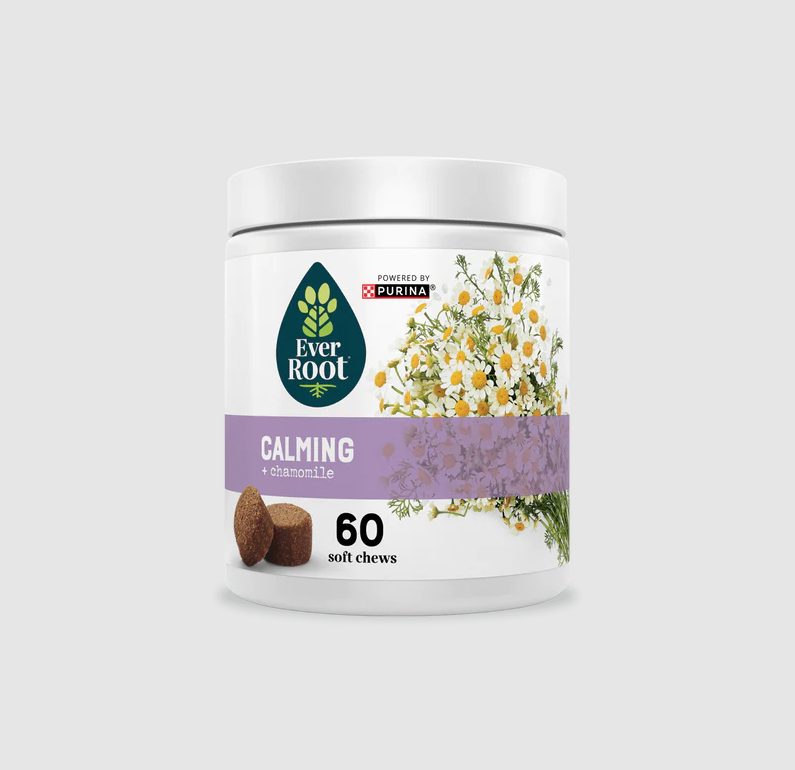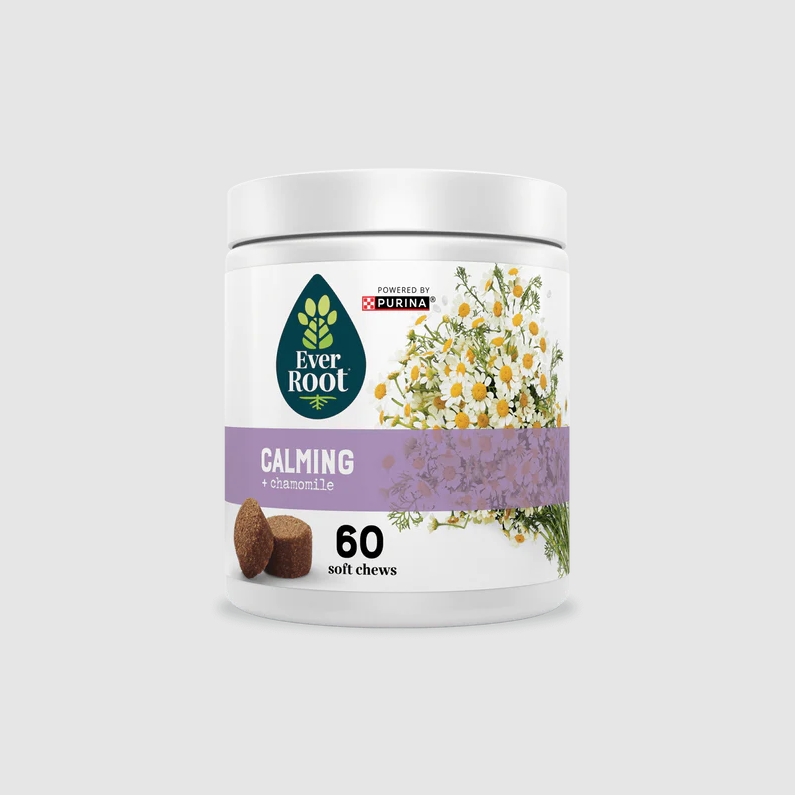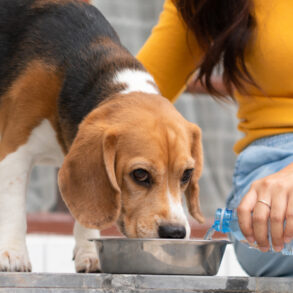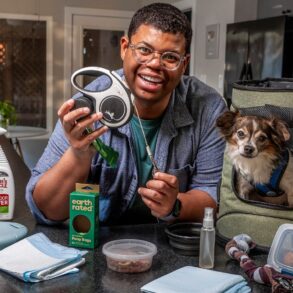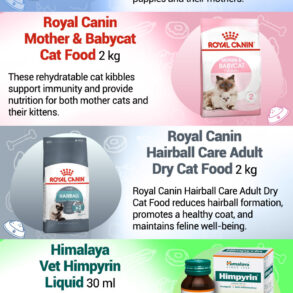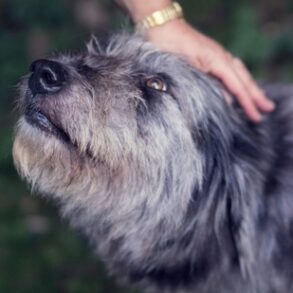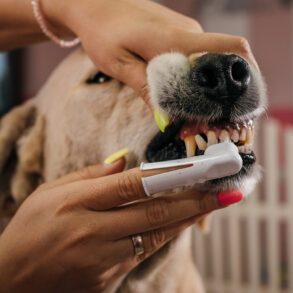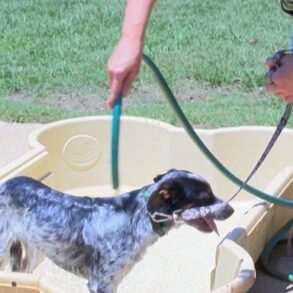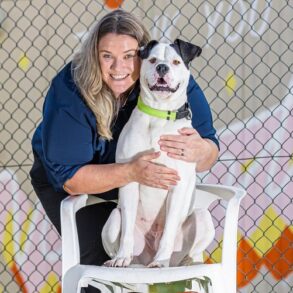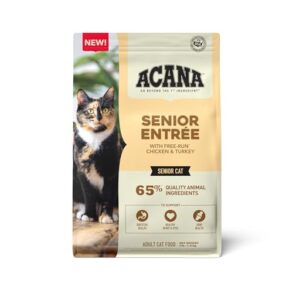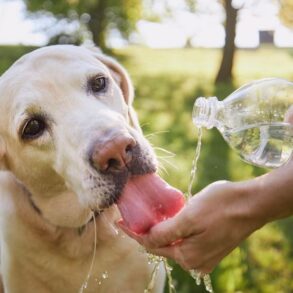There are two universal truths when it comes to the pet-parent relationship: They can’t speak, and we can’t read their minds. This, of course, makes determining their needs difficult at times—which is why we turn to the experts.
There are a few key markers that indicate your dog’s overall wellbeing, says RuthAnn Lobos, DVM, CCRT, CVAT, senior veterinarian with Nestlé Purina PetCare in Boulder, Colorado. Physically, your pup should have a shiny coat and healthy skin, clear eyes and ears, and maintain an ideal bodyweight as recommended by your vet. Mentally and emotionally, it’s ideal that they exhibit playfulness, enthusiasm, alertness, and responsiveness, and have positive interactions with people. “A wagging tail and relaxed body posture can be associated with happiness in our dogs,” she says. And while there’s no one-size-fits-all way to determine the best approach, there are some tried-and-true tips toward the healthiest and happiest pup possible.
Feed Them Well
It’s vital that dogs eat a balanced, age-appropriate diet, says Brooklyn-based veterinarian and special surgeon Renee McDougall, DVM, MPH, who adds that they need different nutrients at different life stages. Just as you might take supplements to improve aspects of your health, they can do the same. “Dogs have unique needs and can sometimes benefit from a little extra support, above and beyond their normal diet,” Dr. Lobos says. Note that as the name suggests, supplements are meant to be given in addition to your pet’s normal diet, not as a substitute.
You can give your dog supplements that support healthy coat and skin, aid digestion, help them stay calm, ease joint stiffness, and more. Consult your vet for suggestions, says Dr. Lobos, “but keep in mind that you know your dog better than anyone, and the areas they need a little extra help may be apparent in everyday life.” She particularly recommends new EverRoot Soft Chews by Purina, which are expertly formulated with ingredients like organic chamomile and wild-caught Alaskan cod liver oil, because they “cover a variety of benefit areas in multiple forms to fit unique needs and preferences. It’s a great way to personalize your dog’s nutrition plan,” she says. Cod liver oil, for example, possesses nutrients like omega-3 fatty acids to support healthy skin and fur, vitamin A for immune function and eye health and vitamin D for bone health.“The high-quality ingredients and our traceable sourcing practices means these products have everything your unique dog needs, without the things they don’t.”
Get Them Moving
Long walks around the neighborhood, playing ball in the park, even just getting out the zoomies around the living room: Dogs need—and thrive on—regular exercise. “They gain and maintain muscle mass, and keep those extra pounds off,” Dr. McDougall says. “Believe it or not, just as with us, staying in shape can extend their lives.” Depending on size and breed, they may need between 30 minutes and two hours of activity each day.
Excite Their Minds
Your dog will flourish when she’s mentally stimulated. Dr. McDougall recommends “training as a great way to challenge their minds—especially in a young pet.” Start with the useful everyday basics: sit, stay, leave it.
“Other ways to keep those canine brains sharp include puzzle toys, new tricks, and changing up the scenery during walks,” she says, noting that since dogs derive so much stimulation through their sense of smell, it’s good to let them explore their curiosities. “Dogs gain a lot of mental stimulation through sniffing during walks.”
Normalize Interactions
“I recommend touching their paws, looking in their mouth, looking in their ears when they are little—so they get used to it as ‘normal,’” says Dr. Lobos. Familiarizing your dog with these practices and showing them there’s nothing to be scared of will make veterinarian exams easier and more informative, she says. Be sure to use positive reinforcement as they grow.
Find the Fun
Happiness begets healthfulness, so add engaging play sessions to your dog’s routine. “Socializing them with other dogs of all ages and sizes, as well as people of various ages, can also help create a resilient, confident adult dog,” says Dr. Lobos—which helps them both in the long and short term. Set up playdates with neighbors, and make five minutes at night to wrestle with their favorite toy. After all, when everything contributes to your dog’s overall wellbeing, no detail is too small.
This post was originally published on this site be sure to check out more of their content.




